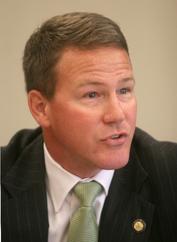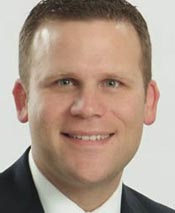 Bravo to the Plain Dealer for getting the big four in Ohio elections law and policy on the record regarding national GOP attempts to rig the Electoral College.
The Plain Dealer reports that Gov. John Kasich, House Speaker Bill Batchelder and Senate President Keith Faber have all said through spokespeople that there are no plans for Ohio Republicans to join their compatriots in states like Virginia and Pennsylvania to change how Electoral College votes are tallied.
We posted earlier this week about Ohio Secretary of State Jon Husted floating the idea at a post-election lobbying confab in Columbus that winner takes all Electoral College vote tallying in Ohio would solve some of (his) perceived problems. (Perhaps like President Barack Obama winning the state.) To Husted’s credit, he says the remarks were taken out of context and said this today to the Plain Dealer:
Bravo to the Plain Dealer for getting the big four in Ohio elections law and policy on the record regarding national GOP attempts to rig the Electoral College.
The Plain Dealer reports that Gov. John Kasich, House Speaker Bill Batchelder and Senate President Keith Faber have all said through spokespeople that there are no plans for Ohio Republicans to join their compatriots in states like Virginia and Pennsylvania to change how Electoral College votes are tallied.
We posted earlier this week about Ohio Secretary of State Jon Husted floating the idea at a post-election lobbying confab in Columbus that winner takes all Electoral College vote tallying in Ohio would solve some of (his) perceived problems. (Perhaps like President Barack Obama winning the state.) To Husted’s credit, he says the remarks were taken out of context and said this today to the Plain Dealer:
“Nobody in Ohio is advocating this,” Husted said in a telephone interview.Let’s hope this is the case and that Democrats and Independents in Ohio aren’t futher insulted and taken advantage of by extending gerrymandering to the Electoral College.


